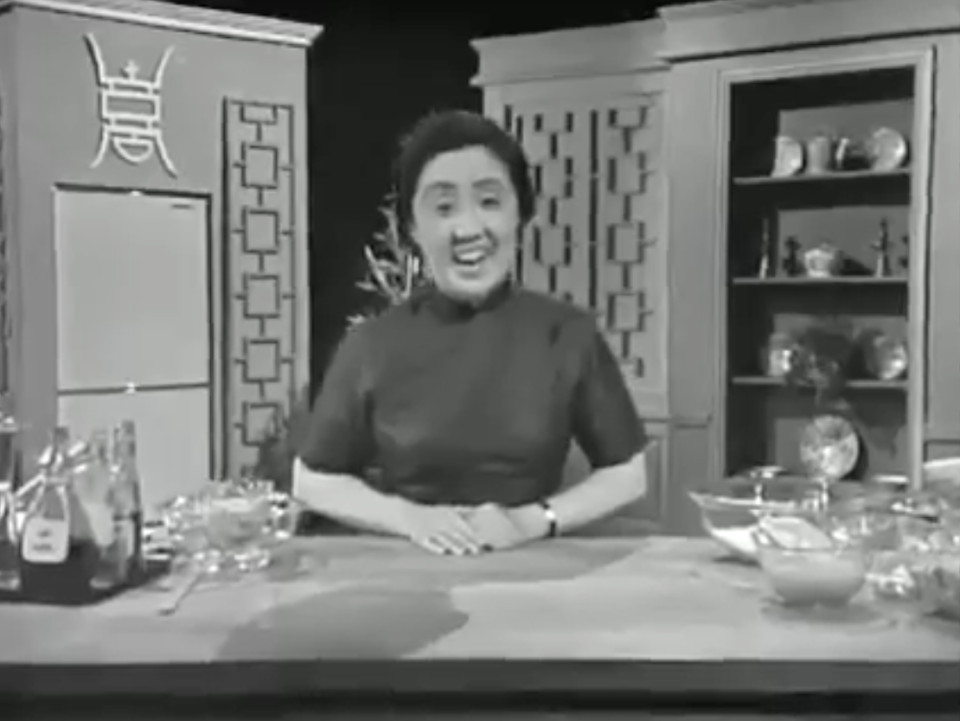Michael Jackson Removed "Dirty Diana" From His London Concert Out Of Respect For Princess Diana, And 19 Other Truly Fascinating Facts I Stumbled Upon This Week
1.Bewitched, which followed an ad exec who marries a witch, charmed audiences in the late 1960s. The show was known for being a "civil rights allegory" and frequently tackled themes of tolerance through the lens of living as a witch. In 1969, viewers were left confused when Dick York, who played Darrin Stephens, the male lead, was swapped out of the show and replaced with Dick Sargent without any explanation. From that point, many believed the show had jumped the shark, and it began rapidly losing viewers.
ABC / Via giphy.com
Meanwhile, Marcella Saunders, an English teacher at Thomas Jefferson High School in Los Angeles, was looking for a way to get her students excited about writing and decided to send letters to actors and writers from primetime TV shows to see if her students could contribute ideas. Bewitched star Elizabeth Montgomery and the show's producer (and Montgomery's then-husband) William Asher got the letter and invited Saunders's class to come to the show's set. As a thank you for the visit, the class wrote up a storyline for an episode that revolved around race and friendship between Black and white people.

Barbara Avedon, a writer for the show, turned their storyline into a script. The episode, called "Sisters At Heart," aired as the show's holiday special on Christmas Eve in 1970. The names of all 26 students from the class appeared in the episode's on-screen credits. It was praised by both the media and educators and won the 1971 Governor's Award at the Emmys. "I think Elizabeth Montgomery and her husband Bill Asher were political people and I don’t think they were afraid to kind of face the issues," Erin Murphy, who played a child version of Montgomery's character, told Closer. Montgomery was vocal about the episode being her favorite during the show's 254-episode run.
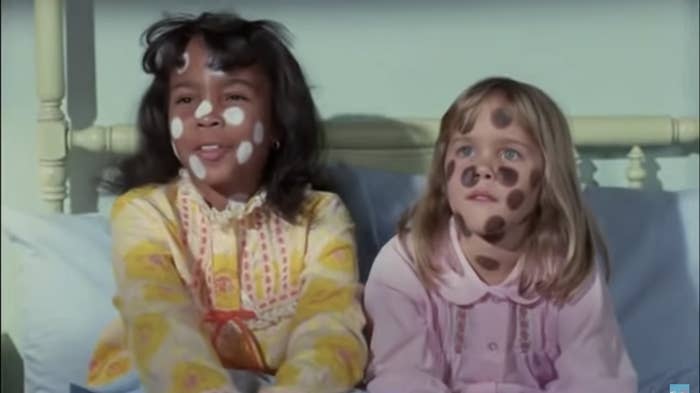
2.About one-third of murders committed in the United States go unsolved. This has been a more recent development — 50 years ago, the "clearance rate," referring to the percentage of murders that ended in an arrest, was over 90%. So, what happened? According to the FBI, the rate has lowered because standards for arrest are higher, DNA technology is more precise, and there has been an increase in "no snitch" culture, leading to fewer arrests.

3.Despite the fact that chicken parmesan is probably on the menu at your local Italian restaurant, it's technically not authentic Italian cuisine. When immigrants from Sicily began to settle in the United States in the 1950s, they often made eggplant parmesan, a dish comprised of fried eggplant with tomato sauce and parmesan that dates back to 1837. In the United States, meat was much cheaper, so immigrants started experimenting by swapping the eggplant for chicken. It soon started to make its way into Italian-American restaurants, where it became a beloved meal.
Cucina Tagliani Pasta, Pizza & Vino / Via giphy.com
4.In July 1988, Michael Jackson was set to perform at Wembley Stadium as part of his Bad tour. Jackson allegedly decided to remove the song "Dirty Diana" from the setlist out of respect for Princess Diana, who would be in attendance at the show. In a 1997 interview with Barbara Walters, Jackson said that when he met Diana before the show, she asked him if he was going to play the song. He told her that he cut it from the setlist out of respect for her, but she told him that she loved the song and wanted to hear him perform it.
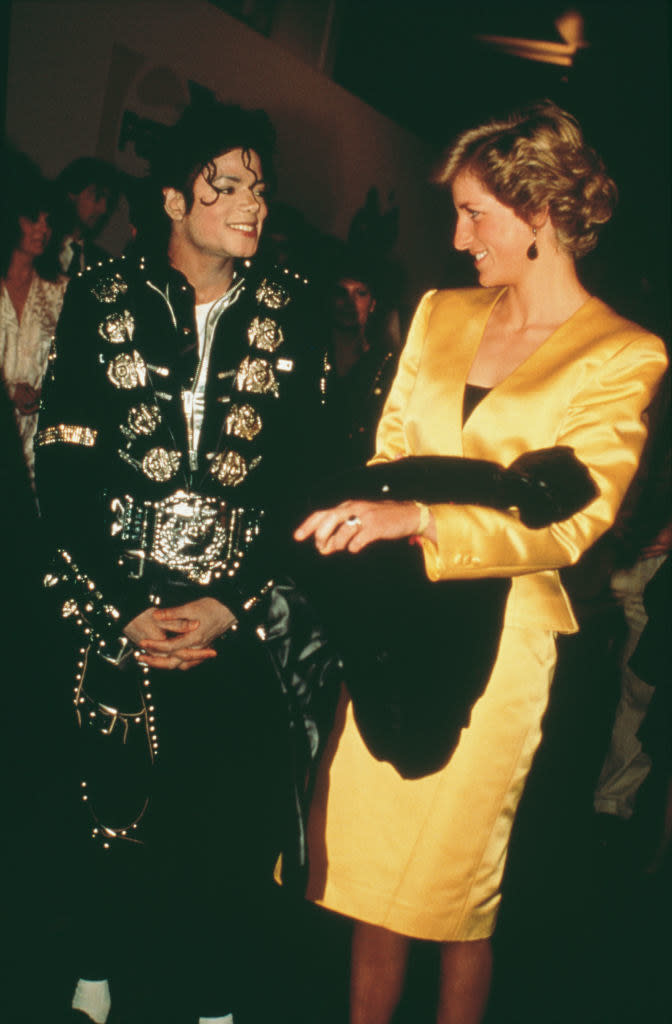
It has often been speculated that Jackson actually wrote "Dirty Diana" with Princess Diana in mind, but Jackson debunked that speculation. "It's not about Lady Diana," Jackson told Barbara Walters. "It's about certain kinds of girls that hang around concerts or clubs. You know, they call them groupies. I've lived that all my life — they do everything with the band."
5.If you have a cat, then your beloved pet is actually over 95% tiger! A 2013 study found that cats share about 95.6% of their genetic makeup with tigers, despite the fact that they diverged on the evolutionary tree nearly 11 million years ago.
BBC / Via giphy.com
6.The Amityville Horror is pretty much required viewing for any horror fan, but the legend of the real house is honestly even more terrifying than the movie itself. On November 13, 1974, Ronald DeFeo, Jr. brutally murdered his parents and four siblings in their sleep. He claimed that he had been hearing voices that encouraged him to kill his family. DeFeo confessed to the murders, but his attorneys still attempted to plead insanity, citing the voices DeFeo claimed he heard in his head as proof.

Despite the fact that such gruesome murders happened in the home, it went back on the market. Just thirteen months after the DeFeo murders, the Lutz family purchased the home for $80,000. When the Lutzes moved in, they claimed that they immediately experienced strange phenomena, alleging that they noticed green slime coming from the walls and keyholes, smelled strange odors around the home, and felt random cold patches of air. George Lutz claimed that he saw his wife and children levitating in their beds. Additionally, George, whose family members said dabbled in the occult, said that he was woken up at 3:15 a.m. every morning, which was the time DeFeo supposedly carried out his murders.
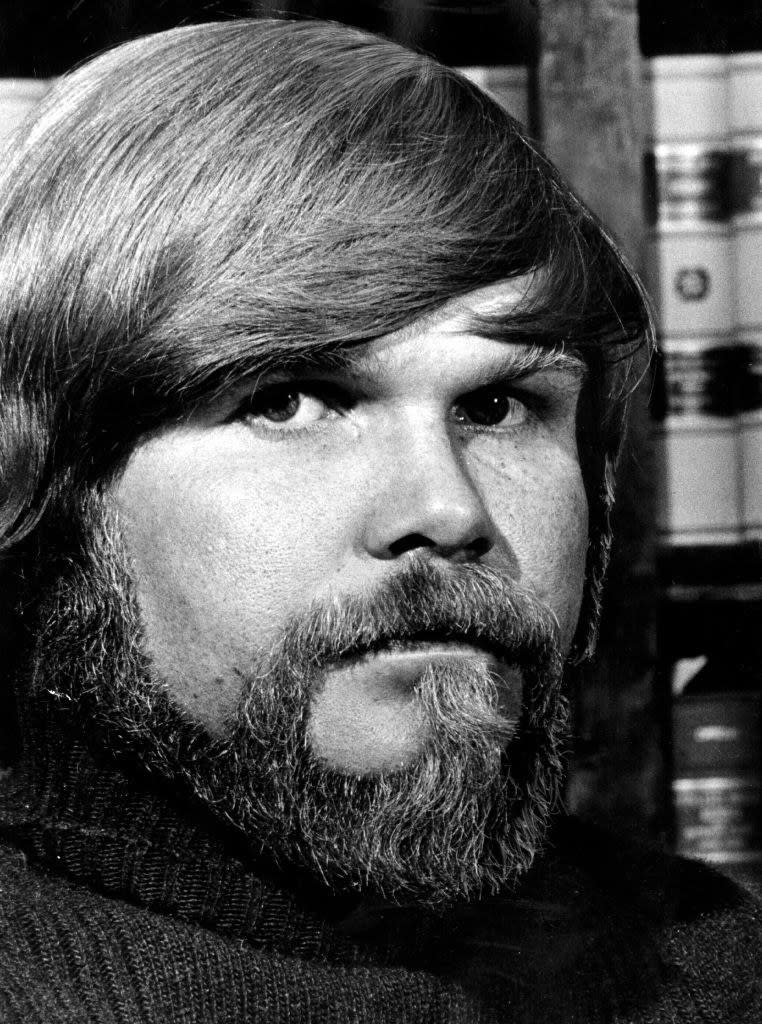
After these creepy occurrences, the Lutzes reportedly hired a priest to come and bless the house. When the priest arrived, they claimed that the priest heard a voice scream, "Get out!" and promptly told the Lutzes to never sleep in that bedroom. Just 28 days after they moved in, the Lutz family decided to move out of the house. They started to share their story. Many began to question the validity of their claims, so George and his wife Kathy took a lie detector test. Although they passed the test, people close to the couple still publicly doubted their story.
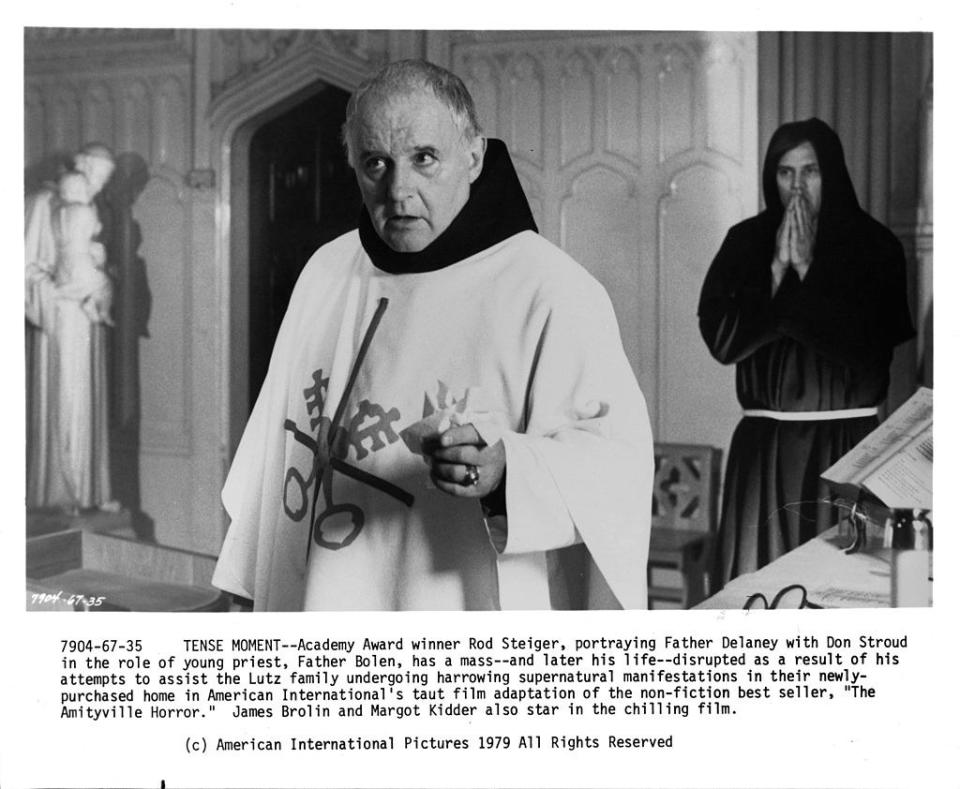
Their claims were turned into a book in 1977, and a movie in 1979. In 1979, William Weber, the couple's attorney, who quit after a financial dispute, told the media that he had helped George and Kathy make up the story "over many bottles of wine." The Lutzes were allegedly caught up in financial trouble, and some believed that they devised the story in order to use the money they made to pay their debts. Since the murders, the house has been sold four more times, but now has a new address: 108 Ocean Avenue, put in place to deter tourists.

7.In Montana, you can technically get married without either member of the couple actually being there! It's called a double proxy marriage and requires a party present for both members of the couple. The law was likely developed to allow young miners who headed out west for work to marry their girlfriends back home. Today, at least one person in the marriage has to be from Montana, or must be an active member of the US military.
NBC / Via giphy.com
8.When Ozzy Osbourne's band Black Sabbath was gaining popularity in the 1970s, they realized that many of their fans were Satanists. In his memoir, Osbourne wrote that the band would often turn down requests to perform "black masses" at cemeteries with them after the show. “I’d say to them, ‘Look, mate, the only evil spirits I’m interested in are called whisky, vodka, and gin.” On one occasion, the band was invited to perform a concert at Stonehenge by a group of Satan worshippers. Osbourne said that the band turned down the show. In response, the Satanists allegedly told the band that they were going to put a curse on them.

“One night, after finishing a show, we returned to the hotel and found the corridor leading to our rooms completely filled with people wearing black cloaks, sitting on the floor with candles in their hands, chanting, ‘Ahhhh,'" band member Tony Iommi recalled. Black Sabbath ended up taking matters into their own hands to get the Satanists to leave them alone. "We synchronized our watches, opened our doors at the same time, blew the candles out, and sang 'Happy Birthday' to them," Iommi said. "Pissed 'em off." Despite the interruptions, Black Sabbath members have said that they owe some of their popularity to the so-called Satanists. "The good thing about the satanic stuff was that it gave us endless free publicity," Osbourne said. "People couldn’t get enough of it."

9.Saturn is obviously incredibly recognizable for its rings, although their origin had scientists scratching their heads for centuries. A recent article published in a science journal claims that Saturn's rings were created when a moon came too close to the planet. As a result, Saturn's gravitational pull tore the moon apart. The article suggests that the rings are not actually solid, but instead are tiny chunks of the moon that are spinning so quickly, they appear to be solid forms.

10.When tulips made their way to Holland in the 17th century, they were an incredibly hot commodity. Prices for the flowers rose, and the demand for tulips began to outweigh the available supply. By 1610, one tulip bulb was seen as an acceptable form of dowry for young brides. In France, an entire brewery was exchanged for a rare tulip bulb. The phenomenon was dubbed Tulip Mania.
Keukenhof / Via giphy.com
Tulip Mania hit its peak in Holland in 1633. Prior to this, the tulip trade had been restricted to professionals, but in 1633, the market opened up for regular people to dabble in the tulip craze. People would remortgage their homes and assets in order to keep up with the tulip pricing structure. By 1637, the tulip trade crashed and the price of tulips hit rock bottom, leaving many Dutch families penniless.

11.If you've ever seen someone get a mini pot-bellied pig or teacup pig as a pet, then you might want to warn them that their pet is actually part of a marketing scam. According to Smithsonian Magazine, all pot-bellied pigs that are sold as "minis" are all eventually going to grow up to be full-sized pigs. In fact, these pigs were likely underfed to stunt their growth, a practice that many breeders encourage buyers to continue as the pig grows up.

12.Elvis Presley's legacy in Mexico was plagued with controversy. In the 1950s, a Mexican newspaper columnist wrote that Presley had called Mexico "a distasteful country," and insulted Mexican women. As a result, protesters began burning Presley's albums. In 1963, Presley starred in Fun in Acapulco, in which Presley played a lifeguard working at a Mexican hotel. In the film, Presley performed songs in Spanish, with lines like "Life begins in Mexico!" The movie was not filmed on location in Mexico, but on a lot in Hollywood.

Turns out, the entire controversy was supposedly a set-up: a Mexican politician had reportedly asked Presley if he would perform a private concert for his teenage daughter and her friends. Presley turned down the gig, and as a result, the politician allegedly decided to turn his constituents against the singer. According to Billboard, Presley attempted to repair the rift throughout his career. In 1998, BMG Mexico released an album series called Elvis Le Canta a Mexico (Elvis Sings to Mexico), perhaps to win back some favor with Mexican fans.

13.While the NFL draft is now a pretty huge deal with tons of media coverage and fanfare, it wasn't always such a spectacle. In the 1970s, coaches were notorious for pulling pranks during later rounds after the big-name players had been drafted. In the 17th (and final) round of the 1971 NFL draft, the Atlanta Falcons selected "tackle John Wayne of Apache U." Turns out, the team was referring to 63-year-old actor John Wayne as a joke, but both fans and fellow coaches fell for the gag. Wayne actually did play football for the University of Southern California in the 1920s before an injury forced him to quit.
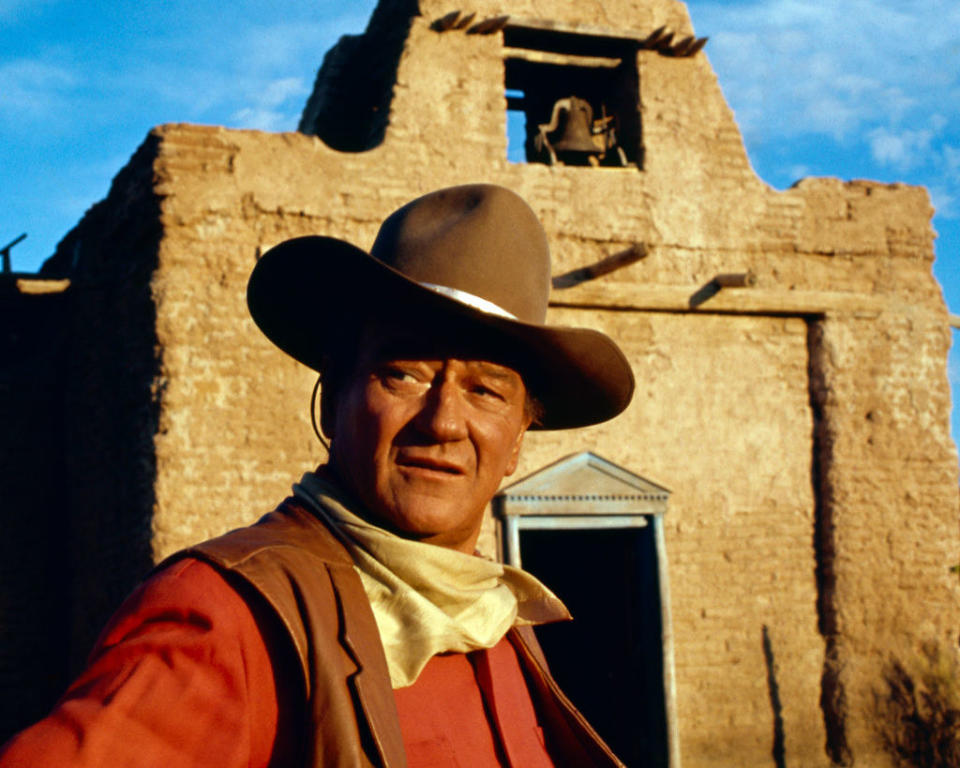
14.As a kid, I was obsessed with presidents and I was even more obsessed with the story that William Howard Taft got stuck in the White House bath tub and required the strength of six men to free him. Years later, I learned that the story was actually a total myth. The legend reportedly began to spread after Irwin Hoover, who worked in the White House for over 40 years, wrote in his 1934 memoir that Taft used to "stick" to the tub and required assistance when getting out. The story is actually quite sad: Taft, who had been vocal about struggling with his weight, weighed about 340 pounds at the time of his inauguration, and was often chastised by the press for it.

15.When Nike was developing its iconic Cortez shoe in 1967, they wanted to name it the Aztec in honor of the 1968 Olympics, which were being held in Mexico. The issue? Adidas already had a sneaker called the Azteca Gold. When the brand heard about Nike's plan, they said they were prepared to sue if Nike went through with the shoe's name. Nike co-founders Phil Knight and Bill Bowerman decided to swap the name.

In Shoe Dog, Knight's memoir, he wrote that he drove over to Bowerman's house to brainstorm new names. "'Who was that guy who kicked the sh*t out of the Aztecs?' he asked," Knight wrote. "'Cortez,' I said. He grunted. 'Okay. Let's call it the Cortez.'" Hernán Cortés was a Spanish conquistador who conquered the Aztecs and took their capital city of Tenochtitlan. NPR wrote that the name Cortez was "a reference to the atrocities of colonization," and stood out as a sign that Nike (then called Blue Ribbon Sports) "was looking to make waves in the world of footwear."

16.About an hour before Martin Luther King Jr.'s assassination, he engaged in a pillow fight with his friends at the Lorraine Motel in Memphis. "Ambassador Andrew Young once told me it was the happiest he’d seen Dr. King in a long time. The leader had been exhausted and worried for months prior. But on this day 50 years ago, he was content," director Ava Duvernay wrote in a 2018 essay reflecting on King's impact on the 50th anniversary of his death.

17.Aquariums aren't technically allowed to pay other aquariums for their animals, as the practice is viewed as a form of poaching and requires a permit when it comes to endangered species. Instead, they have developed a barter system with each other where they trade animals. The New England Aquarium breeds and barters hundreds of jellyfish, which they trade in mass quantities to secure new sea creatures to display. Because these bartering transactions don't use any money, it allows aquariums to get past the pesky permits.
Tumblr / Via giphy.com
18.Carrie, the novel that kickstarted Stephen King's legendary horror career, was nearly taken out with the trash. King and his wife Tabby were living in a trailer in Maine in the 1970s and said they were struggling to get by. King was working as an English teacher and often picked up odd jobs for extra money, in addition to writing short stories that he would send to magazines. When his school approached him to become the coach of the debate team, he nearly accepted the job because it came with a $300 bonus, until Tabby realized that he would have no time to write, and told him to turn it down and encouraged him to work on a new project.

King got the inspiration for Carrie from a reader who responded to a short story he had published in Cavalier, a "nudie mag" that also published short fiction. "You write all those macho things," a reader said. "But you can’t write about women. You’re scared of women." King took that as a challenge, and developed Carrie, a high schooler who could control objects with her mind and used her powers to exact revenge on her classmates. King said he based the character on two of the "loneliest girls" from his own high school experience. Both of the women Carrie was modeled after had died in the years since.
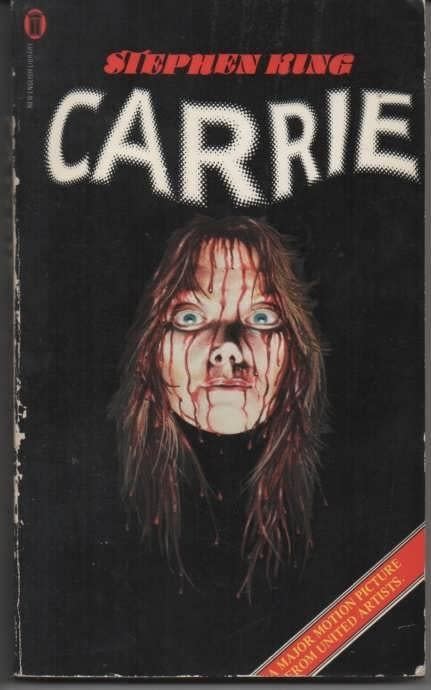
King said their deaths made Carrie incredibly difficult to write. He also said the story was moving too slowly to be accepted by the magazines that normally published his work. After writing three pages, King allegedly crumpled up his work and threw it away. Later, Tabby reportedly found the pages in the garbage and told him that it was a story worth sticking with. Nine months later, King had finished his draft. Carrie was rejected by 30 publishers before landing at Doubleday. King received a $2,500 advance for the novel. While the hardcover version of the book sold rather modestly, the rights to the paperback sold to Signet Books for $400,000 in 1974, and went on to sell a million copies in its first year. In 1976, the film adaptation was released.
MGM / Via giphy.com
19.The phrase "poster child" likely originated in 1730s London, where artist William Hogarth painted an image of a child on a hospital's coat of arms in order to boost patronage and donations to the hospital. Despite the first poster child appearing in 1737, the phrase wasn't commonly used until the 1930s, when the National Society For Crippled Children sold stamps featuring images of children on crutches with the tagline, "Help Crippled Children."

20.And finally, if you're an American who loves Chinese food, then you probably owe Joyce Chen a big thank you. Chen was a Chinese chef who revolutionized Chinese food in America during the 1960s. Born and raised in Shanghai, Chen and her husband fled China in 1949 as the Communist regime took hold. They ended up in Cambridge, Massachusetts. In 1955, Chen made egg rolls for a fair at her son's school. The egg rolls were a massive hit and sold out. Although Chen's children have admitted that the egg rolls she made were nothing like the traditional Chinese version, Chen knew the perfect way to cater them to American taste buds.
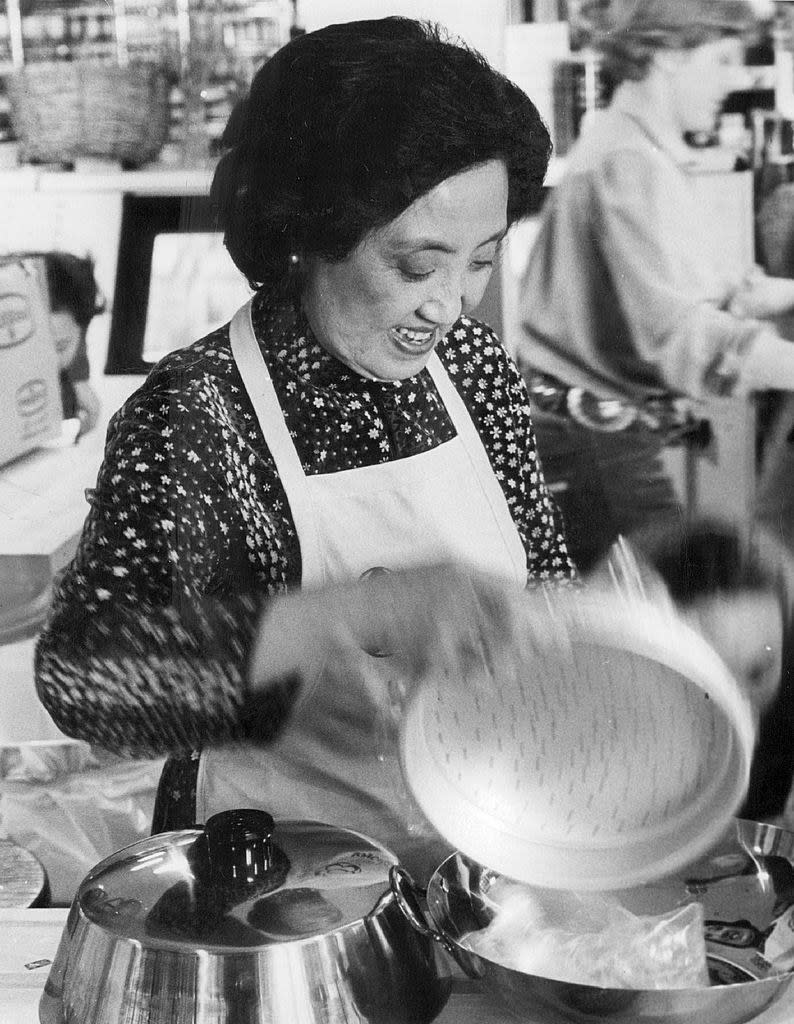
Soon, Chen began developing new takes on traditional Chinese cuisine with tweaks for American audiences. She even designed and patented a wok that would work with American stoves. Chen started teaching cooking classes, and by 1958, had opened her own restaurant. In 1962, she self-published a cookbook full of her recipes. A local TV station took notice of Chen's popularity. In 1966, they offered her a cooking show on WGBH (in the same year, the channel also developed Julia Child's cooking show). Audiences claimed they had a hard time understanding Chen, and WGBH chose not to renew her show. In the 1970s, she traveled to China and made a food documentary, but spent the rest of her life behind the camera, focusing on her restaurants. Chen rarely received recognition for her culinary achievements during her lifetime, but has since been the focus of an HBO documentary and has appeared on postal stamps honoring culinary icons.
